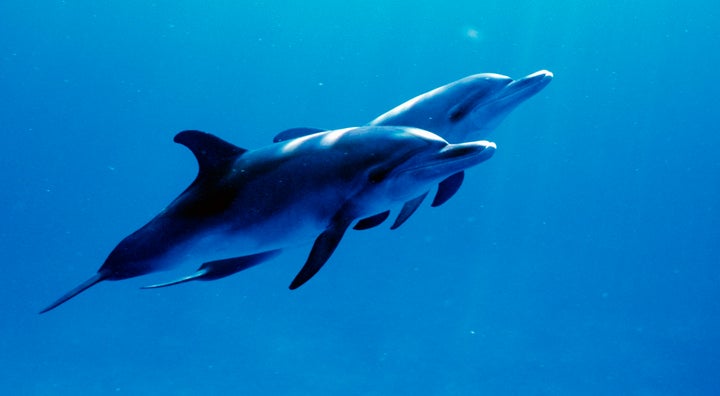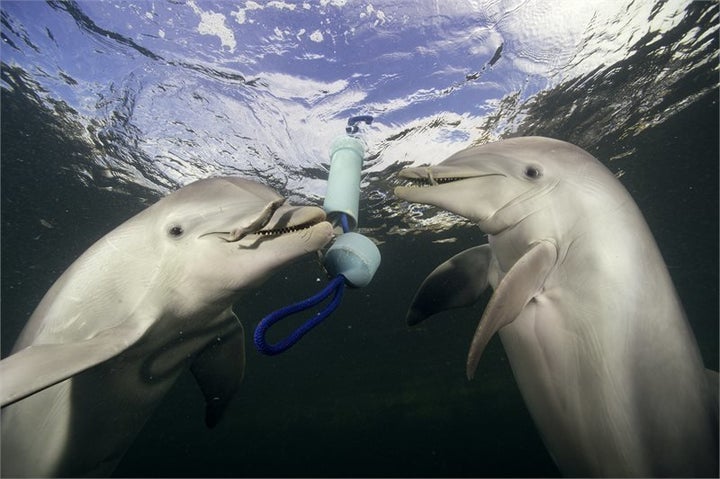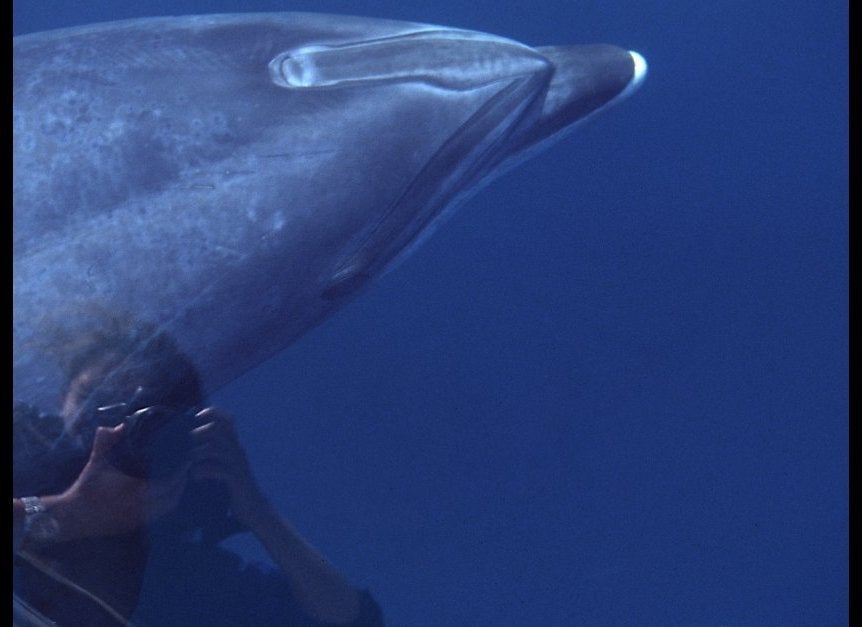It's known dolphins use acoustic signals to maintain contact with one another and find food. Now, a new study shows that they also use them when solving complicated problems together.
While scientists can't say for certain that dolphins have what humans call a language, the findings suggest vocalizations may play a much larger role in efforts that require cooperation than previously thought, lead author Holli Eskelinen, an assistant director of research at Dolphins Plus in Florida, told The Huffington Post.
"This is the first time that we can say conclusively that vocalizations were used to solve a cooperative task/problem," she wrote in an email.

In an initial study last year, Eskelinen and other researchers set out to answer the question of whether bottlenose dolphins could cooperate to solve a task, as chimpanzees and elephants have been documented to do. To do so, they presented six captive dolphins at the Dolphins Plus facility in Key Largo with a plastic pipe container full of fish, squid and other treats. The container, with a rope at each end, was designed so that opening it is easiest if two animals work together by pulling from either end.
Four of the six dolphins were unsuccessful in getting to the food. Two dominant males, however, proved victorious time and time again.
It was during further analysis of the original data, Eskelinen said, that the team noticed the increase in dolphin chatter, specifically burst pulse signals, which are most commonly affiliated with social interactions.
"All we can say at this point is that we observed a significant increase in vocalizations during the two animals interacting condition," she said. "We can’t say with certainty what the vocalizations mean, but we were able to discern that the increase in vocalizations was identified when they were interacting with the apparatus simultaneously."
Leigh Torres, a marine ecologist at Oregon State University, told New Scientist that the study findings "point toward the possibility of a dolphin language that enables team problem solving."
Andrew Dewald, a professor of cognitive psychology at the University of Hawaii, however, urged caution when comparing the cognitive abilities of humans to that of a non-human species. While the animals demonstrated a behavior that points to a capacity for cooperation and problem solving, he said, "caution is required here in taking the behavior of sound production being ultimately an indication of comprehension."
Still, Dewald said it is a "neat paper" and a "really clever paradigm" to get to the question of whether two or more dolphins can communicate in order to solve a problem that benefits all parties.
Eskelinen told HuffPost many people are anxious to show parallels between animals and humans, but using the word "language" when describing the communication observed in dolphins is "very premature."
"Often times people ask me 'How smart are dolphins?' when we should be asking ourselves, 'How are dolphins smart?'" she said. "The same holds true for their communicative abilities, instead of trying to see if they communicate like humans, our focus has shifted to a more baseline approach of how they communicate."
Eskelinen added that scientists are "just scratching the surface in understanding the components of each different sound type and what they are used for."

Dolphins Plus consists of two separate facilities on the island of Key Largo, Florida. In addition to offering several programs to swim with captive dolphins, experiences that start at $150 per person, Eskelinen said the facilities host some 20,000 students a year and are currently involved in more than 50 research projects related to acoustics, behavior and cognition.
Swim-with-dolphins establishments, including Dolphins Plus and SeaWorld, have long been scrutinized by conservationists and animal welfare groups who say dolphins are dangerous and that it is unethical to keep the animals in a captive environment.
Eskelinen said that while she understands many believe captivity is a double-edged sword, the research being conducted is helping conserve the species and contributing to a greater understanding of these animals and their wild counterparts. In the end, she said, it may help humans better manage our own activities and help protect the species.
"As long as we're being a part of the solution and not the problem, then this kind of research is important," she said.

